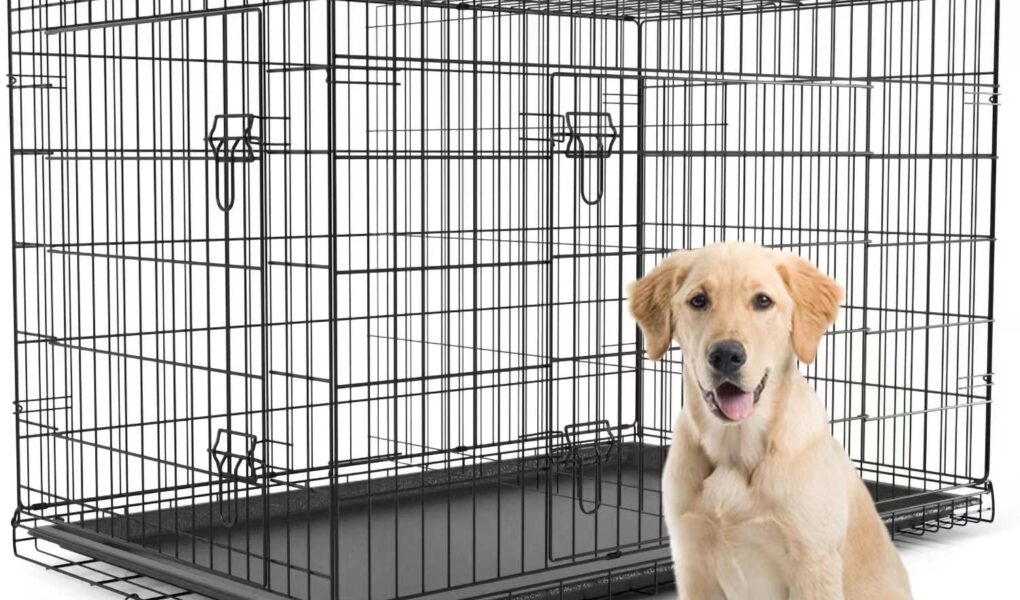Title: The Unseen Sanctuary: Exploring the World of Dog Crates
In the bustling lives we lead alongside our furry companions, finding a space where they can feel secure and at ease is paramount. Enter the dog crate—often misunderstood but truly a multifaceted tool for pet owners. More than just a space confinement, a properly utilized crate serves as a cozy retreat, a safe haven, and an invaluable aid in training. Whether you’re a seasoned dog owner or a first-time adopter, understanding the role of dog crates in creating a harmonious household is essential. From fostering a sense of belonging to ensuring safety during travel, join us as we delve into the intricacies of dog crates, uncovering their benefits, best practices, and how they can enhance the lives of our canine friends.
Table of Contents
- Choosing the Right Dog Crate for Your Furry Friend
- Creating a Comfortable and Secure Space for Your Dog
- Essential Tips for Crate Training Success
- Maintaining and Cleaning Your Dog Crate Effectively
- Q&A
- Insights and Conclusions
Choosing the Right Dog Crate for Your Furry Friend
When selecting a crate for your dog, it’s essential to consider several critical factors that ensure both comfort and functionality. First and foremost, size matters. Your furry friend should have enough room to stand, turn around, and lie down comfortably. Look for crates that are categorized by size—small, medium, large, and extra-large. It’s also wise to think about the material; options include metal, plastic, and fabric. Each material has its pros and cons, such as durability or portability. Additionally, climate can influence your choice, as some materials perform better in different temperatures.
Another important aspect is the crate’s design. Features to consider include the ease of access, ventilation, and whether it has a removable tray for easy cleaning. You might also want to consider a kennel that can be converted into a longer-term solution; many crates come with dividers that can be adjusted as your pup grows. Here is a quick reference table to help outline essential crate features:
| Feature | Metal Crates | Plastic Crates | Fabric Crates |
|---|---|---|---|
| Durability | High | Medium | Low |
| Portability | Medium | High | Very High |
| Easy Cleaning | Medium | High | Medium |
Creating a Comfortable and Secure Space for Your Dog
Designing a haven for your dog is essential for their happiness and well-being. A crate can become a comforting sanctuary if approached thoughtfully. Consider the following elements to enhance your dog’s crate experience:
- Soft bedding: Choose a plush mat or blanket that provides warmth and comfort.
- Toys and chews: Include a few safe toys to keep them entertained while in the crate.
- Personal items: Adding a piece of your clothing can provide them with a sense of security.
Additionally, the placement of the crate has a significant impact on how secure your pet feels. Ideally, it should be located in a quiet, low-traffic area of your home. Here’s a simple table showcasing the best crate locations:
| Location | Benefits |
|---|---|
| Living Room | Ensures your dog feels included in family activities. |
| Bedroom | Offers companionship during the night, easing anxiety. |
| Quiet Corner | Provides a peaceful retreat away from noise and chaos. |
Essential Tips for Crate Training Success
Creating a positive experience for your dog during crate training is essential for long-term success. Start by introducing the crate gradually; place it in a common area of your home where your dog feels comfortable. Make the space inviting by adding soft bedding and their favorite toys. You can entice your pet to explore the crate with treats or by playing games that involve going in and out of the space. Remember to regularly praise your dog for entering the crate voluntarily, reinforcing their willingness to use it as a safe haven.
Establishing a routine will also aid in effective crate training. Schedule regular times for meals, bathroom breaks, and crate time to help your dog understand what to expect. Avoid using the crate as a punishment, as this can create negative associations. Instead, use it as a place for downtime after play or as a cozy retreat during hectic moments. To encourage a sense of safety, consider the following tips:
- Keep the crate door open when not in use.
- Start with short periods of confinement, gradually increasing the duration.
- Ensure regular breaks for exercise and bathroom needs.
- Never leave your dog in the crate for extended periods.
Maintaining and Cleaning Your Dog Crate Effectively
Keeping your dog crate in optimal condition requires a routine cleaning schedule to ensure a healthy environment for your furry friend. Begin by removing all bedding and toys from the crate. Shake out and vacuum any loose hair or debris before proceeding with a thorough wash of the crate’s interior and exterior. Use a mixture of warm water and pet-safe cleaners to wipe down the surfaces. Key steps include:
- Disinfect: Regularly apply a pet-safe disinfectant to eliminate bacteria and odors.
- Dry Thoroughly: Ensure that the crate is completely dry to prevent mildew.
- Inspect for Damage: Check for any sharp edges or broken parts that could harm your pet.
After cleaning, enhance your dog’s comfort by replacing any bedding and toys. Choose materials that are machine washable for easy maintenance in the future. Creating a cleaning schedule can help maintain a fresh and welcoming space for your dog. A simple table can be a handy guide for your routine:
| Task | Frequency |
|---|---|
| Deep clean the crate | Once a month |
| Spot clean any messes | As needed |
| Replace bedding | Weekly |
Q&A
Q&A: Everything You Need to Know About Dog Crates
Q: What exactly is a dog crate, and why should I consider using one?
A: A dog crate is a safe, enclosed space designed to provide a cozy den-like environment for your canine companion. It offers a sense of security, aids in house training, and helps prevent destructive behaviors when you’re not around. Think of it as your dog’s personal retreat!
Q: Are all dog crates the same?
A: Not quite! Dog crates come in various materials and designs, including wire, plastic, and fabric. Each type has its unique features and benefits. For example, wire crates offer visibility and ventilation, while plastic crates are great for travel and provide a more enclosed feel.
Q: How do I choose the right size crate for my dog?
A: The ideal crate should allow your dog to stand up, turn around, and lie down comfortably. When sizing, measure your dog from the tip of their nose to the tip of their tail and from the ground to the top of their head. Add a few inches for extra room, and you’ll have the perfect fit!
Q: Can I use a crate for all dog breeds?
A: Absolutely! Crates are suitable for dogs of all breeds, from tiny Chihuahuas to large Great Danes. Just ensure you select a crate that accommodates your dog’s size and breed characteristics. Some breeds may require more space or prefer different styles, so consider their unique traits when choosing.
Q: Is crate training difficult?
A: Crate training can be simple with patience and consistency. Start by introducing your dog to the crate gradually, using treats and positive reinforcement to create a positive association. Make the crate a pleasant place by adding comfortable bedding and toys. With time, your dog will likely see it as a safe haven.
Q: Are there any situations where a crate might not be appropriate?
A: Crates can be a great tool, but they’re not suitable for every situation. If you have a dog that experiences extreme anxiety or claustrophobia, a crate might exacerbate those feelings. In such cases, consulting with a professional trainer or behaviorist before crate training is wise.
Q: How long can I leave my dog in a crate?
A: The duration depends on the dog’s age, breed, and individual needs. Generally, adult dogs can be crated for 4-6 hours during the day, while puppies may need breaks every hour or so. Always consider your dog’s comfort and provide plenty of exercise and mental stimulation outside the crate.
Q: Do I need to cover the crate?
A: Covering the crate can create a more den-like atmosphere, helping some dogs feel more secure. However, every dog is different. You can try covering it with a blanket or towel and observe your dog’s behavior to see if it enhances their comfort.
Q: What if my dog hates the crate?
A: If your dog shows resistance to the crate, it’s essential to take a step back. Reevaluate your training approach; gradually introduce the crate, using treats and toys to make it an enticing space. Patience and positive reinforcement are key!
Q: Are there alternatives to crates?
A: Yes! If you feel a crate isn’t the right fit for your dog, consider playpens or baby gates to create a safe area in your home. Additionally, supervised time in a dog-proofed room can offer freedom while keeping your pet safe.
Q: Can I travel with a dog crate?
A: Of course! Many crates are designed for travel, whether by car or air. Be sure to check airline requirements and choose a crate that’s sturdy and well-ventilated for a comfortable journey. Traveling with your dog’s crate can help them feel secure in new environments.
Q: Do I need to clean the crate?
A: Yes! Keeping the crate clean is essential for your dog’s health and comfort. Regularly remove bedding, toys, and any waste, and wash the crate as needed. A clean crate promotes a positive environment for your furry friend.
Q: Any final tips for crate training success?
A: Always keep training sessions short and enjoyable! Celebrate small victories and be patient with your dog. Consistent positive reinforcement will foster a healthy relationship with the crate, turning it into a beloved part of your dog’s daily life. Happy crating!
Insights and Conclusions
dog crates serve as a vital tool in the journey of responsible pet ownership. While they may often be viewed as mere enclosures, their purpose transcends simple confinement. By providing a safe space for our furry companions, we foster a sense of security and comfort that can lead to improved behavior and well-being. Understanding the different types of crates, their benefits, and the best practices for crate training will empower you to make informed decisions for your dog’s needs. As you embark on this rewarding path, remember that patience, consistency, and love are the keys to transforming a crate into a cozy sanctuary for your loyal friend. Embrace this opportunity to enhance the bond you share, ensuring that both you and your dog find joy and peace in each other’s company.



